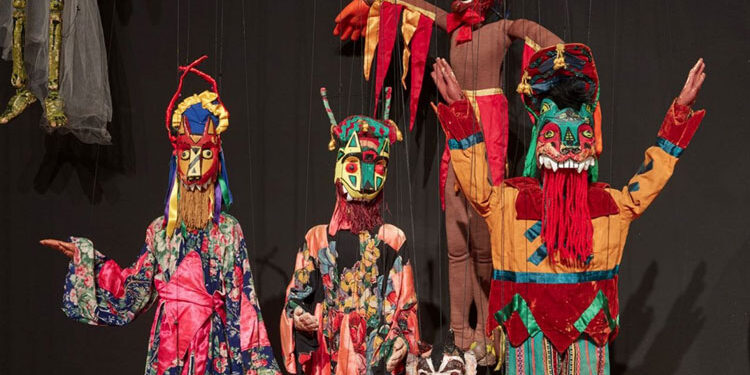The Museo Reina Sofía (Sabatini Building, Floor 1) organizes until next 10 March 2025 the exhibition Esperpento. Popular art and aesthetic revolution, which addresses the concept of «smorgasbord» as a core of aesthetic thinking capable of offering a new perspective to understand reality.
Formulated by the writer Ramón María del Valle-Inclán (1866-1936) as a tool for critical questioning, in reaction to the backwardness and moral despair that ravaged Spain in the first third of the twentieth century, the the political and cultural of the country, insisting on distancing the gaze and a series of aesthetic strategies that deployed their maximum efficiency in deformation. Unlike other cultural manifestations of the grotesque that emerged in Europe, where monstrous distortion embodied the absurdity of life during this time, the spermicide proposed a new aesthetic which entailed a commitment to renewal of social structures.
Through a wide selection of documents and artistic works of various kinds, this exhibition examines the main themes and strategies that articulate the spermicide, highlighting that it is an aesthetic proposal that has survived the time and thought of Valle-Inclán.
The sample is divided into eight major sections. It begins in the last decades of the 19th century with Before the Spermition, where a selection of the satirical press of the moment is shown, paintings and popular optical devices that were an antecedent of the deformation techniques. Then, already in the twentieth century, Midnight Vision delves into artistic works related to the effects of World War I, spiritualism and altered states of consciousness that show the impact of a reality that was decomposing. Puppet Show and Honor of Don Friolera/Carnival Tuesday call for elements and literary forms of popular tradition to openly denounce the disagreement of Valle-Inclán with the factual powers. Luces de bohemia includes explicit references to the moment of social revolt and decadence of bohemia in which the homonymous work takes place. For its part, Retablos goes into the works of artists, which converge with the writer’s stories, where religiosity is mixed with popular tradition to show instincts, sins and passions. Tirano Banderas presents the incarnation of the smorgasbord in the figure of the tyrant that the writer portrayed (and which remains today): a grotesque political leader, the degradation of a hero in whom bulls cruelty, pride and fear. Finally, El Ruedo Ibérico, a title taken from the unfinished novel project of Valle-Inclán, closes the exhibition with the metaphor of the history of Spain as a great bullring, where violence, politics and spectacle reveal the previous tensions that developed in the Civil War.
During the exhibition period, the company Lagartijas tiradas al sol presents a contemporary review of the novel Tirano Banderas (Valle-Inclán, 1926), starting from the version in bululú -theatrical genre in which a single comedian represents the entirety of the work Conceived by stage director Cipriano Rivas Cherif. With I don’t have to continue dreaming about the corpses that I’ve seen, the collective gives the space of representation to the rebellious and fighting women, absent in the writer’s story, but victims alike of the tyranny and violence that the novel describes.







